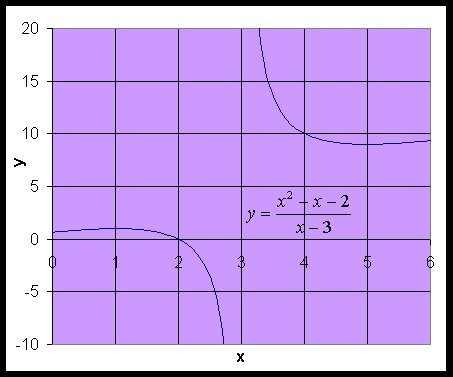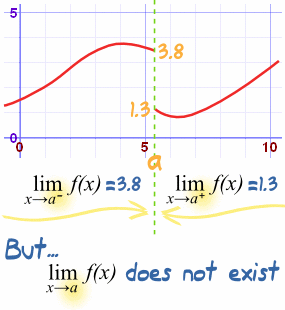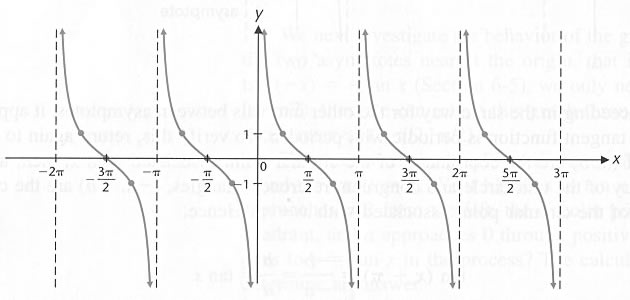How do the graphs of sine and cosine relate to each of the others? Emphasize asymptotes in your response.
Tangent
Sine and cosine is related to tangent because the ratio identity for tangent is (sin/cos). The quadrants in the Unit Circle is shown in the tangent graph. Using our previous knowledge of the unit circle, we know where sine and cos is positive or negative in the quadrants. If sine or cosine is negative, then tangent would be negative. If sine or cosine was positive or negative, tangent would be positive. In the first quadrant, sine and cosine are positive, so tangent is positive. In the second quadrant, cosine is negative, but sine is positive. But, overall tan is negative because cosine is negative. In the third quadrant, both sine and cosine are negative, making tangent positive (the negatives cancel out). The fourth quadrant for tan is negative because cosine is positive, but sine is negative, making tan negative. Tangent has asymptotes when cosine is equal to 0. Therefore, at pi/2 and 3pi/2, there are asymptotes. The asmymptotes repeat itself over and over again, as the domain goes on.
Visual of Tangent
 |
| (https://www.desmos.com/calculator) |
Cotangent
In cotangent, the ratio identity is cosine/sine. It is very similar to tangent. Cosine and sine are positive in the first quadrant, so cotangent is positive. In the second section, the sine is positive and cosine is negative, so cotangent is negative. For the third quadrant, cosine and sine are negative, making cotangent positive (cancels out). For the fourth quadrant, cos is positive and sine is negative, making cotangent negative. Sine must equal to 0 to find the asymptotes. Remember, asymptotes are undefined values. Therefore, we know that sine is equal to 0 are (1,0) and (-1,0). That is at 0 and pi. Cotangent is different from tangent because of the asymptotes.
Visual of Cotangent
 |
| https://www.desmos.com/calculator) |
Secant
The reciprocal of secant is cosine. So the graph is just cosine flipped. So since cosine is positive in the first and last quadrant, and negative in the second and third, so is secant. If cosine is positive, so is secant. Sine has no effect on the graph because it is not part of the ratio. The asymptotes are (0,1) which is pi over 2 and (0,-1) and 3pi over 2. This is where cosine is 0, making the ratio undefined. This is similar to the tangent graph, which had cosine as the denominator.
Visual of Secant
 |
| (https://www.desmos.com/calculator) |
Cosecant
Cosecant is just secant reversed. The ratio for cosecant is 1/sin. So basically, since sin is positive. so is cosecant in the first quadrant. In the second quadrant, cosecant is positive as well. In the third and fourth, cosecant is negative. The asympytotes are where sine is equal to 0 which is at (1,0) and (-1,0). Therefore, it is at 0 and pi. Remember, the graphs don't EVER touch the asymptote.
Visual of Cosecant
 |
| (https://www.desmos.com/calculator |



.jpeg)



.jpeg)








